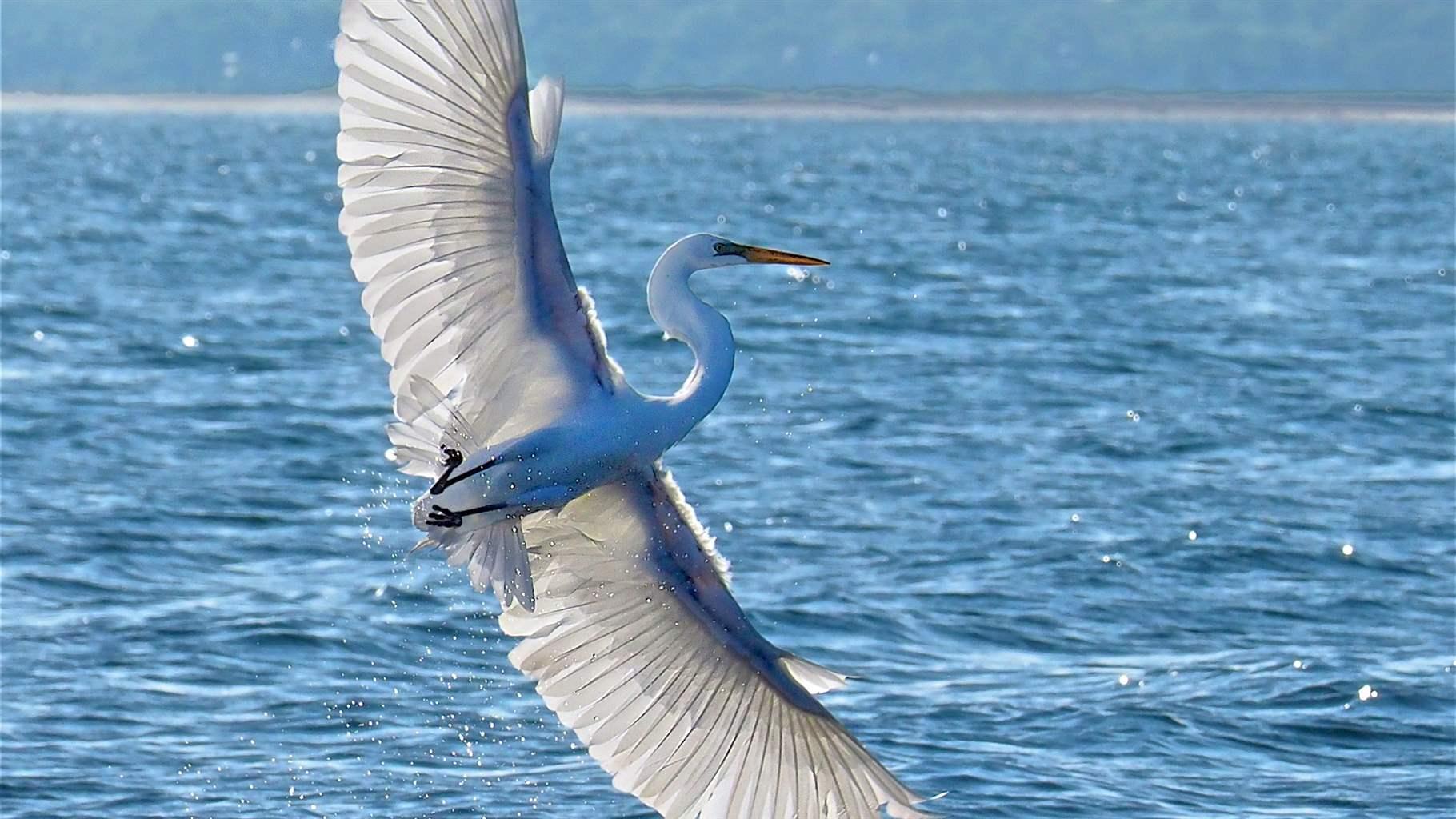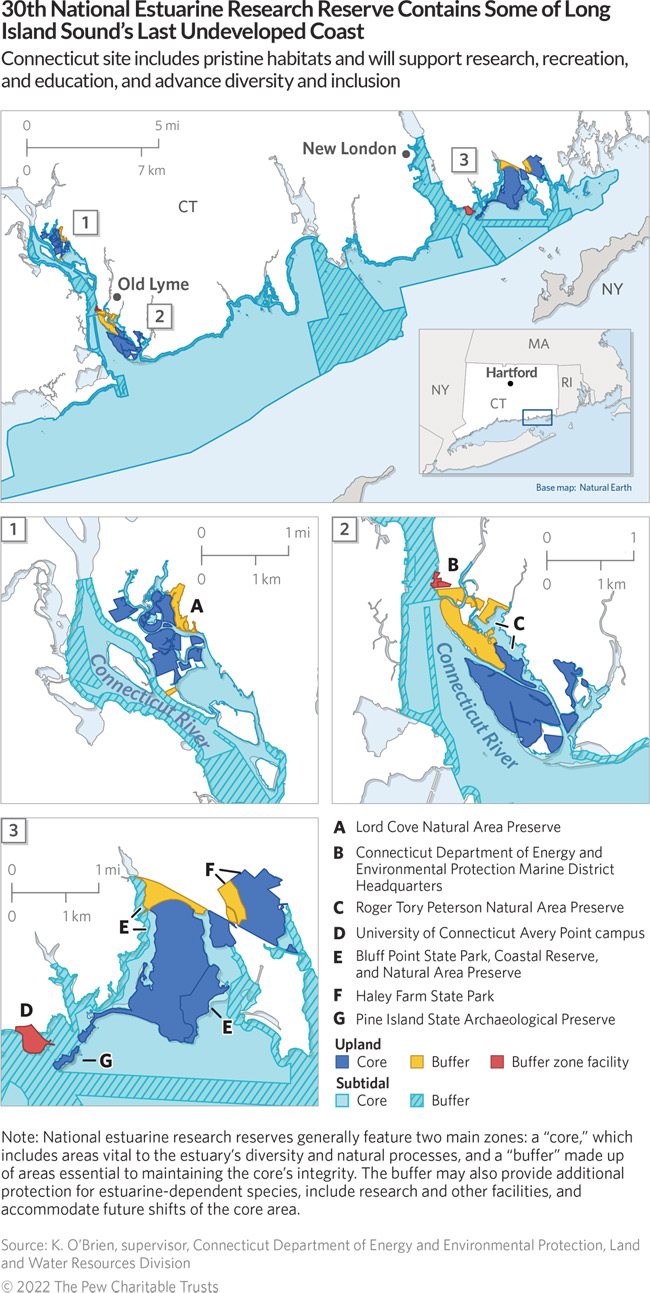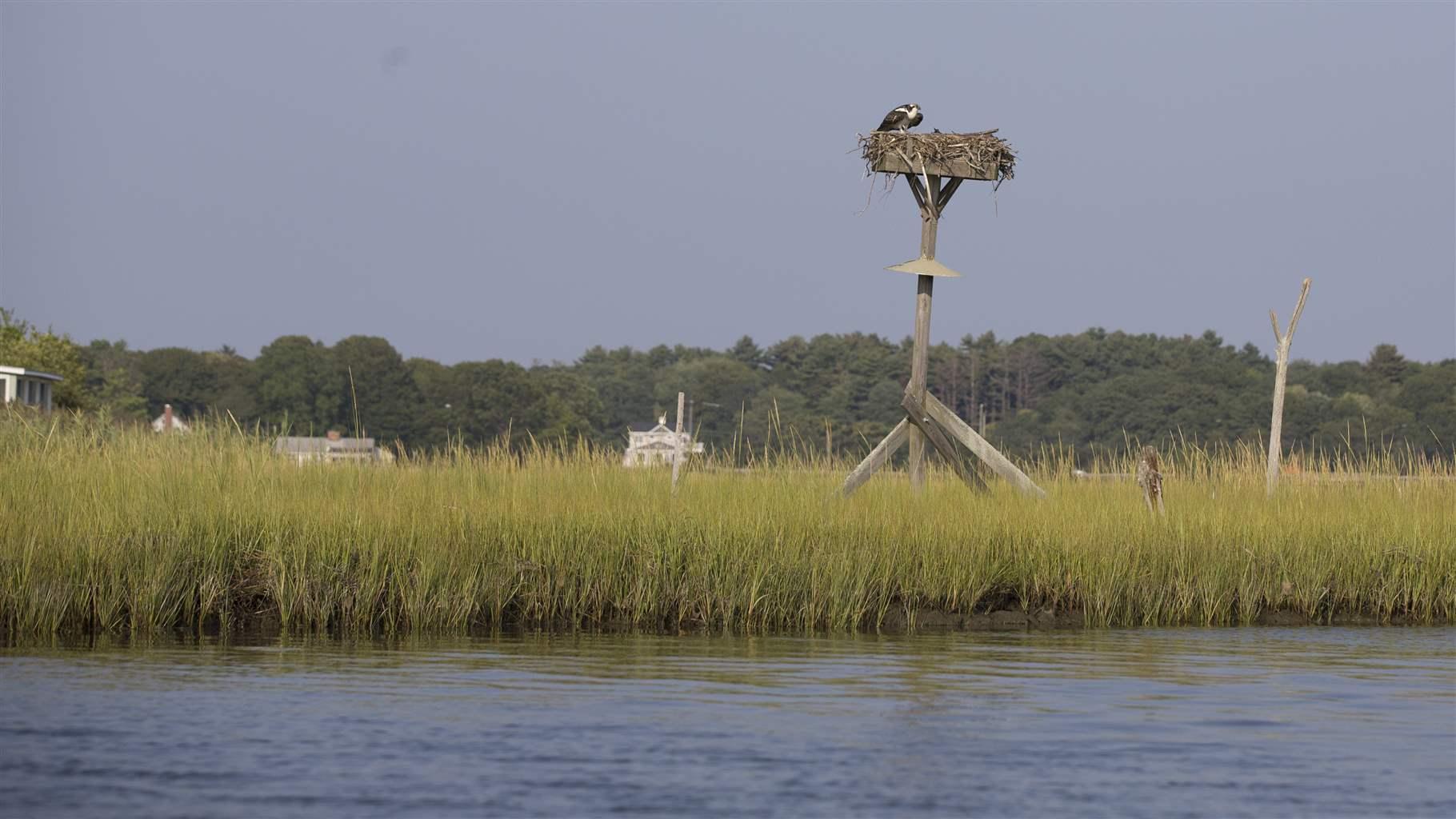Connecticut Gains Country’s 30th National Estuarine Research Reserve
Designation protects area where fresh and saltwater mix and will support conservation, research about climate change, and economic resources

Editor’s note: This article was revised Jan. 14, 2022, to update site names listed on the map.
Connecticut today successfully concluded a decades-long quest when the U.S. Department of Commerce, on the recommendation of the National Atmospheric and Oceanic Administration (NOAA), designated the country’s 30th National Estuarine Research Reserve (NERR) within the state’s borders.
The nation’s newest estuarine research reserve encompasses about 52,000 acres in the southeastern part of the state, where the Connecticut and Thames rivers flow into Long Island Sound. Prior to this designation, Connecticut was one of only two coastal states lacking a reserve. (Louisiana is the other.) Estuaries are broadly defined as areas where freshwater flowing from rivers and streams mixes with saltwater from the ocean; they create abundant habitats for marine life, boost coastal economies, and serve as buffers for coastal communities from storms and sea level rise.
“The reserve is the product of the work of many dedicated organizations and volunteers over many years,” said Patrick Comins, executive director of the Connecticut Audubon Society. “With the increasingly ominous climate change threat to our region and state, we’re particularly pleased to join the national NERR system. It will enable us to study and better counter these environmental threats.”
The National Estuarine Research Reserve System (NERRS), created by Congress in the early 1970s as part of the Coastal Zone Management Act, supports research, education, and stewardship of U.S. estuaries and other habitats in coastal and Great Lakes states and territories.
According to the Connecticut reserve’s environmental impact statement (EIS), which was required to advance the reserve’s designation, the site supports more than 1,200 species of invertebrates and 120 species of fish. In total, nearly 50 species listed under the Connecticut Endangered Species Act live, feed, breed, or stop over in the reserve.
Reserve expected to make significant contributions to coastal conservation
Representatives from organizations that drove the designation process, including the Connecticut Department of Energy and Environmental Protection (CT DEEP), Connecticut Audubon Society, University of Connecticut, Connecticut Sea Grant, and NOAA, noted the many contributions that the newest NERR is expected to provide the state, region, and nation:
- Allow for research and monitoring to help better understand the impact of climate change. Warming waters and sea level rise are significant environmental threats to the region, according to the reserve’s EIS. The Connecticut Governor’s Council on Climate Change projects that sea level rise in Long Island Sound means that storms comparable to Superstorm Sandy, which ravaged the region in 2012, can now be expected every five to 10 years. While noting that the site is home to healthy seagrasses that significantly enhance water quality and provide a buffer from storms, the EIS warns that “seagrass meadows are particularly vulnerable to heat stress” from climate change. Resulting losses will “leave coastal communities more vulnerable to future storms” and imperil the coastal habitats relied upon by fish and other wildlife. Research and monitoring within the reserve’s boundaries is expected to support Connecticut in meeting its goal of reducing greenhouse gas emissions to below 2001 levels by 2030.
- Serve as a living laboratory to study environmental changes and harness nature-based solutions to address threats. The Connecticut NERR will be a site where restoration practices can be tested and applied broadly to other coastal areas, according to the reserve’s first management plan, which will govern its operations through 2027 and be updated every five years. Areas of specific interest include living shorelines—techniques that rely on natural approaches such as salt marshes to protect tidal shorelines instead of hardened structures such as bulkheads.
- Help assess the economic value of estuaries. Estuaries are a big driver of coastal economies, both in direct economic benefits and in protecting economic assets from the threats caused by sea level rise and climate change. According to the Long Island Sound Study, a Connecticut and New York partnership of federal and state agencies, organizations, and individuals, the Sound is responsible for about $9.4 billion in annual economic impact in the region. A study released last year by Restore America’s Estuaries and NOAA noted that although the nation’s estuaries constitute only 4% of the U.S. continental landmass, their counties are home to 40% of the country’s population and responsible for 47% of the nation’s gross domestic product. And a June 2021 analysis commissioned by NOAA and Pew found that four of the country’s NERR sites generated at least $165 million in combined annual revenue for their communities, including creating and sustaining 1,762 jobs. Yet such economic benefits from NERRs are threatened by a changing climate. “Along coastlines around the world, rising seas resulting from climate change threaten infrastructure necessary for local jobs and regional industries,” according to an August 2020 NOAA article. Likewise, investing in coastal conservation can pay big dividends: For every $1 invested in mitigation, communities avoid spending $7 in recovery from storm damage and ill effects of flooding, according to the Multi-Hazard Mitigation Council, a public-private partnership established by Congress that seeks to increase resilience to and reduce the damaging effects of natural and manmade hazards.
- Connect the region to the national NERRS network. The Connecticut reserve will “likely result in long-term, direct, major beneficial impacts to research and monitoring in the affected environment,” per the EIS. A top goal will be conducting basic and applied research to improve decision-making and education about coastal habitat management, and contributing to assessments across the entire NERR network.
- Foster diversity, equity, and inclusion. The area’s population is varied, ranging from North America’s oldest Native American reservation, the Mashantucket Pequot, to the ethnically diverse cities of New London, Norwich, and Groton, and the more homogenous towns of Lyme and Old Saybrook. The reserve’s diversity, equity, and inclusion objectives center on education, notably developing the next generation of environmental stewards by providing opportunities to educators and students, particularly those who have faced environmental injustices or come from underserved communities.
Pew applauds the commitment and perseverance of CT DEEP, NOAA, the University of Connecticut, Connecticut Sea Grant, Connecticut Audubon Society, and others that worked to achieve this significant milestone. The citizens of Connecticut, and also the entire NERR system, will benefit from our country’s 30th National Estuarine Research Reserve.
Tom Wheatley manages ocean conservation in the Gulf of Mexico, and the support and expansion of the National Estuarine Research Reserve System, as part of Pew’s conserving marine life in the United States project.











